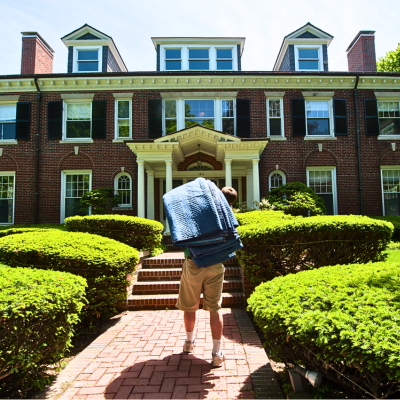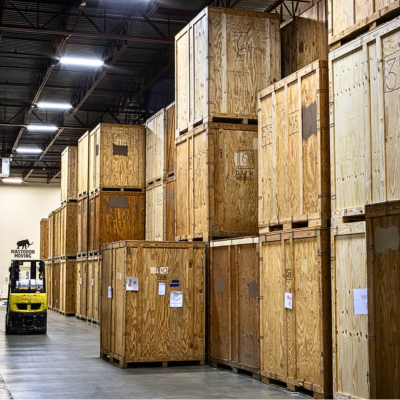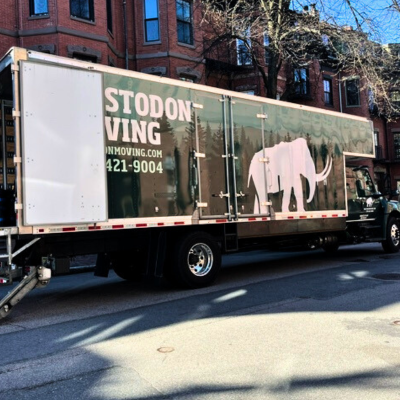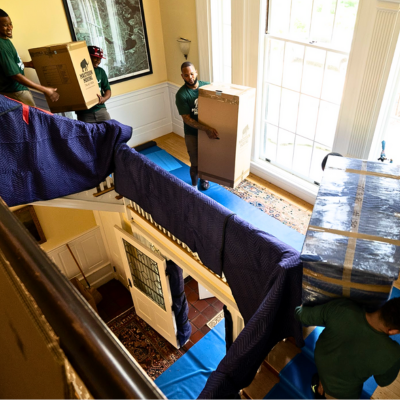Moving Into A Senior Living Checklist Basics
- A checklist for moving to assisted living can help older adults and their caregivers stay organized and know what to expect during the transition period.
- Moving to assisted living often includes downsizing and hiring movers.
- A move to assisted living requires getting important medical and legal documents in place, including power of attorney and a living will.
DOWNLOAD OUR PRINTABLE “MOVING INTO ASSISTED LIVING CHECKLIST”
Part 1: Downsizing
Moving to assisted living often means downsizing from a single-family home or apartment to a smaller apartment or studio. In some cases, you or someone you care for may be sharing an apartment with another assisted living resident. Before making the move, consider how much you need to downsize, and pack accordingly.
Organization
Before deciding what should stay or go, learn everything you can about your new living quarters. Consider taking these steps:
- Get a floor plan. Ask the facility to provide a floor plan with measurements. If they cannot provide measurements, take your own measurements when visiting the facility.
- Take pictures. Visit the facility and take photographs. It’s easy to forget the specific features of a space, especially if you’ve toured several facilities.
- Know what services are provided. For example, you likely won’t need pots, pans, or kitchen utensils, as most assisted living facilities provide three meals per day for all residents. If your apartment has a small kitchenette, you may want to pack coffee mugs, glasses, and small plates for snacks.
Questions to ask before downsizing and organizing
Before you pack, check in with the facility about suggestions and restrictions on personal belongings. Consider asking these questions:
- Do you have a packing list for future residents?
- Are there any specific items I need to bring? For example, some facilities may require a certain kind of laundry hamper or shower curtain.
- Are there any items the facility does not allow?
- Decide what to keep or discard and find a local cleanout company.
As you pack, organize your belongings into three categories: things you’ll take with you, things you’ll donate or pass on to family and friends, and things you’ll throw away.
Here’s how to differentiate what to keep, donate, and discard when moving to assisted living:
- Keep items you use regularly and are in good condition. Just be sure you’ll need these items in your new residence. For example, if your new living quarters don’t include a kitchenette, you won’t need a coffee maker or mugs.
- Donate or gift quality items you won’t need or don’t have room for. For example, you may not have the space to display a large collection of decorative plates in your new studio or suite. Instead, keep one or two favorites and give the rest to friends or family members who would appreciate taking on the collection.
- Discard any items you no longer need or do not use frequently. It’s also a good idea to get rid of clothing or other worn-out, stained, or broken items.
Packing clothing and other personal belongings
In an assisted living community, closet space may be limited. Find out how much storage you’ll have before you decide what clothes to take. For example, some assisted living facilities will provide each resident with a free-standing wardrobe, but not a closet. Ask about how much space is available for a dresser and decide which one to bring to the new assisted living home. The size of the dresser will also help you decide on additional clothes to bring that won’t go in the closet.
Also, if the assisted living facility provides laundry services, they may require personal labels on all clothing, so your items don’t get mixed up with those of other residents. Use a fine-point permanent marker to write your name on all clothing with sewn-in labels. For the rest of your clothing, try no-iron clothing labels, which self-adhere to clothing, and are washing machine and dryer safe.
Part 2: Moving to assisted living logistics
A little pre-planning can go a long way toward easing the stress of a move. Enlisting the help of family members, a move manager, or a moving company can also make the transition easier.
Timeline
Work with the facility to schedule your move-in day. Then, work backward to create a timeline for packing, finalizing paperwork, and handling any legal or financial matters. Remember, your actual move-in will only take one day, but you’ll need several weeks or more to pack and organize for moving day.
Consider a Senior Move Manager
A senior move manager is a trained professional who can help you downsize, organize and arrange the logistics of your move.
Hiring Senior Movers
Not all older adults will need professional movers to help them move to assisted living. The decision to hire senior movers will depend on the size of your current home as well as the size of your assisted living apartment or studio. If you’re moving from one small studio apartment to another, friends and family may be able to assist you with the bulk of the moving, especially if some furniture is provided in the new location. However, if you’re moving into an assisted living facility from a relatively large home, and plan to bring several pieces of furniture, you may want to consider hiring professional packers and movers.
Find Movers Nearby
If you need to hire professional movers, take these steps to ensure you get a good deal with an experienced, trustworthy company:
- Ask the assisted living facility for moving company recommendations. Movers with prior experience in assisted living facilities may be more sensitive to the concerns of older adults, such as arranging furniture to increase accessibility
- Read online reviews of local moving companies on customer review platforms like Google and Yelp.
- Narrow your list to two or three moving companies, and get a cost estimate from each company.
- Confirm your moving company is licensed, insured, and available on the dates you need them. If you have any especially heavy or valuable items, mention these specific items to the moving company. Find Movers Near Me.
Part 3: Health and medical considerations
Assisted living facilities provide residents with personal care and some medical services. This makes a move to assisted living different from a move to a private residence. Working with the facility’s administrators on health and medical factors will be an essential part of the move to assisted living.
Complete required forms and tests
All assisted living facilities require potential residents to submit the results of several health tests
Communicate needs and preferences to the assisted living staff
In addition to the physician referral form, which will help to communicate medical needs to the staff, it’s a good idea to share hobbies and personal interests with assisted living staff. This will help the staff match you or someone you care for with social activities most beneficial to their social and emotional health.
Coordinate with health care providers
Assisted living facilities are typically staffed by certified nursing assistants (CNAs), and some may have a registered nurse (RN) or licensed professional nurse (LPN) on staff. Some assisted living facilities may offer weekly or monthly on-site access to medical professionals, including geriatricians, pharmacists, psychiatrists, and physical therapists.
Transfer any medical records and prescriptions
If your move to assisted living involves switching to a new health care provider or pharmacist, coordinate with staff at the facility to transfer all necessary medical records and prescriptions. Most assisted living facilities will require all medication prescriptions to be transferred to the facility’s preferred pharmacy.
Part 4: Paperwork, bills, and utilities
Before your move to assisted living, you’ll need to go through the process of completing the required paperwork, managing bills, and canceling utilities in your current home.
Complete pre-move paperwork with the community
The assisted living facility will have paperwork the new resident and their family need to complete. This may include medical and financial information, emergency contacts, or a questionnaire about the interests and preferences of the new resident.
Cancel or transfer current utilities and services
In most cases, the all-inclusive rent at an assisted living facility will cover utilities like water and electricity. You can likely cancel these services at your current home without transferring them to your new address. Check with the facility about which services you’ll need to set up and pay for on your own, such as Wi-Fi or a dedicated telephone landline for your room.
Fill out a change-of-address form
Part 5: Legal and financial matters
Moving to assisted living is a good opportunity to get your legal and financial affairs in order. It may be helpful to hire an elder law attorney for some of the documents needed for assisted living.
Update important documents
To ensure you’re getting the best possible care, and your wishes will be honored in the event of a medical emergency, be sure your important legal documents are updated and on file at the assisted living facility. You may want to keep your own copy of these important documents in your assisted living apartment in a locked safe.
Important documents to update for your assisted living checklist include:
- Your Social Security card
- Your health insurance identification cards, such as Medicare or Medicaid ID cards
- Power of attorney documentation, which allows someone to make medical or financial decisions on your behalf
- A will or trust which outlines your wishes for the distribution of property and assets after you die
Part 6: Settling in
Your first night or two in a new home can feel disorienting. Be patient with yourself or the person you care for, and remember that adjusting to a new living situation takes time. While moving to assisted living only takes a single day, it may take a few weeks or months to acclimate to your new home. Here are some tips for settling into your new community.












